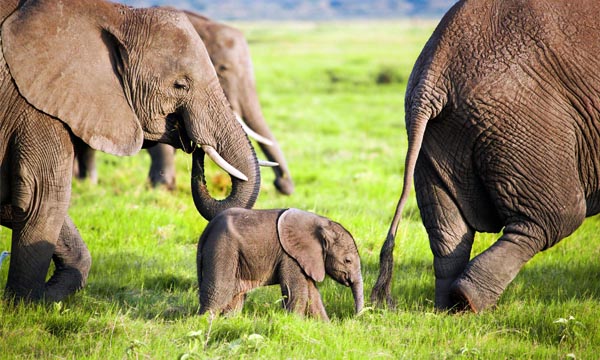Related Wildlife Species Founds in India
Lorem ipsum dolor sit amet, consectetuer commodo ligula eget dolor
Aenean massa Cum dis parturient montes.
Change language

Location :Assam
Coverage area : 2837km
Main attraction : Tiger, Elephant
Best time to visit :October to November, March and April
Nearby excursions : ManasMaozigendri Eco-tourism Society
Nearby cities :
compared to this home of rare animals like Royal Bengal Tiger, elephants, wild buffaloes etc.
You cannot miss the extremely endangered species like Assam Roofed Turtle, One-Horned Rhinos, Golden Langurs, Pigmy Hog, Hispid Hare and the list is endless. Shortly, Manas Wildlife Sanctuary is undoubtedly a heaven for the nature lovers and the birdwatchers. So, hurry up! Tie your shoe-laces, pack your bags, and be ready to awake the wild explorer in you! But first, it is advised that you acquaint yourself with the rules and regulations, which need to be followed while exploring this park so that you can avoid any unnecessary issue.
This sanctuary is located in the foothills of the Himalayas, in the state of Assam. Starting from the boundary of the SankoshRiver in the west and extending till the DhansiriRiver in the east, it covers an area of 2837km. It is landlocked between the five districts of Assam ? Chirang, Baska, Kokrajhar, Darrang, and Udalguri. The elevation is 85 meters above sea level. The latitudes and the longitudes are 26.6594 ?N and 91.0011 ?E, respectively.
The park has a tropical climate. During the summer days, the temperature does not cross 37 ? C. In the winter, it stays around 11 ? C. During the monsoons, the magnitude of the rainfall crosses 160 cm, accompanied with a humid and warm climate.
East Himalayan Moist and Dry Deciduous forests
Sub-Himalayan Light Alluvial and Semi-Evergreen forests
Low Alluvial Savanna Woodland
Assam Valley Semi-Evergreen Alluvial grasslands
Theideal time to visit Manas starts from October to November and lasts till April. So, summer and winter both the seasons can be enlisted. But if you are thinking of visiting Manas Wildlife Sanctuary during the monsoon, the answer is a strict ?No?. The reason being, Assam gets flooded due to heavy rainfall and hence, the park remainsclosed.
Summer: If you choose summer for visiting this place, the time between March and April is the most convenient. The Grassland Management Department destroys the elephant grasses to avoid wildfires. So, the net possibility of getting animal sights in the park rises up. Another advantage of visiting Manas in this season is the amusing natural view from the roads. It is better to avoid the month of May as the intense humidity and temperature witnessed during this month can burn yourskin away.
Winter: This season is the ideal time to visit this World Heritage Site. You will get to see many distinct variants of native and mainly migratory birds during this season. Birdwatchers will find this place worthy of visiting as many bird species are found here.
Talking about the flora of the place, around 543 plant species have been recorded. Out of these, 374 species consist of dicotyledons, 139 species of monocotyledons, and 30 gymnosperms and pteridophytes.
A variety of animals, birds, and reptiles can be seen here. In terms of numbers, there are about 380 species of birds, 55 species of mammals, 3 species of amphibians, and 50 species of reptiles. Out of the 55 species of mammals living here, 33 of them are India?s schedule I mammals and 31 species of the remaining ones are threatened.
The animals found here are Leopards, Tigers, Black Panther, Asian Golden Cat, Hoolock Gibbons, Capped Langurs, Indian Rhinoceros, Asian Water Buffalos, Slow Loris, Asian Elephants, Clouded Leopard, Smooth-Coated Otters, Hog Deer, Barking Deer, Sambar Deer, and Assamese Macaques.
The birds found here are Pied Hornbills, Grey Hornbills, Giant Hornbills, Rufous-Necked Hornbills, Bulbuls, Bengal Florican, Falcons, Serpent Eagles, Ibisbill, Red-Headed Trogon,Mergansers, Magpie Robins, and BrahminyDucks.
Some of the reptiles found here are Monitor Lizards, Assam Roofed Turtles, Gharials, etc.
Delhi , 1820 km
Mumbai , 2678 km
Kolkata ,913 km
Chennai ,2564 km
Pune, 2687 km
Bangalore ,2762 km
Hyderabad ,2357 km
Srinagar ,2639 km
Ahmedabad ,2517 km
Varanasi ,1083 km
Bhubaneswar ,1329 km
Thiruvananthapuram ,3356 km
Airways
Reach Guwahati Airport, which is the nearest one and from there, you can get taxis, which will drop you to the park.
Railways
Though the nearest railway station is Barpeta Road, which is at a distance of 44 km from the park, arriving at Guwahati station proves to be convenient because of its connectivity with the other major cities of the country.
Roadways
Guwahati is the main transit center, from where you can avail a bus or a taxi, which will take you to the park. Manas Tiger Reserve is connected to Guwahati via NH-31.
Accommodation facilities
There are a number of accommodation facilities to make your stay a blissful one. The forest lodge - the only accommodation option situated inside the park is one of the most picturesque dwelling options you could have asked for. You can also take shelter in the Resorts Sikhiri Cottages or enjoy a delightful stay at Florican Cottages. There are a number of eco-camps too, which will provide you a dwelling enveloped by nature. Head to the Jungle Retreat, if you want to enjoy staying at a resort, which has its own restaurant. Other than that, you can booka hotel from a wide range of options, according to your budget.
Things to do
It is best to gain knowledge about the attractive activities you can do at Manas. There are a lot of things in which you can engage yourself and enjoy the natural view to the fullest. Take a look at the activity list: